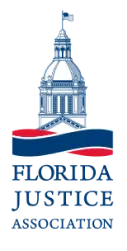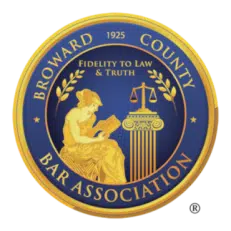
If you’ve been involved in a bike accident in Florida, understanding your rights and the specific laws that apply to cyclists is crucial. Florida bike accident law, or “Florida bike accident law” as some may refer to it, encompasses various regulations that define your legal standing and guide the steps to take after an accident. This article will help you navigate these laws, determine fault, and seek compensation.
Key Takeaways
- Florida law classifies bicycles as vehicles, requiring cyclists to follow the same traffic laws as motorists, including stopping at red lights and riding in traffic.
- Common causes of bike accidents in Florida include driver negligence, evening conditions, and poorly maintained roads, with common types of accidents being rear-end collisions, left-cross accidents, and right-hook crashes.
- Filing a bicycle accident claim involves navigating Florida’s no-fault insurance system and may require legal assistance to secure fair compensation for medical expenses, lost wages, and other damages.
Florida Bicycle Laws: A Comprehensive Overview
In Florida, bicycles are legally defined as vehicles, meaning that cyclists must obey the same traffic laws as motorists. This encompasses stopping at red lights, yielding to other vehicles and pedestrians, and following all road signs and markings. Cyclists are considered vehicle operators and must ride with the flow of traffic, not against it. With this classification, cyclists not only gain equal rights to the roadway as motor vehicle operators but also shoulder similar responsibilities.
Specific regulations apply to e-bikes, which are categorized into three classes based on their speed and whether the motor assists while pedaling. Class 1 and Class 2 e-bikes, which assist only up to 20 miles per hour, can use bike lanes and paths, while Class 3 e-bikes, which can go faster, are restricted to bike lanes and roadways. Such distinctions facilitate the safe integration of e-bike riders into the cycling infrastructure.
Florida law mandates that bicyclists use lights when riding between sunset and sunrise—a white front light visible from 500 feet and a red rear reflector or light visible from 600 feet. Additionally, cyclists are required to have functional brakes that can stop within 25 feet when riding at 10 miles per hour on dry pavement. Adhering to these safety measures helps in accident prevention and increases the visibility of cyclists to other road users.
Traffic Laws for Cyclists in Florida
Traffic laws for cyclists in Florida are designed to integrate bicycles safely into the flow of motor vehicle traffic. Cyclists must obey all traffic signals, signs, and road markings, just like drivers of motor vehicles. This includes stopping at red lights and stop signs, signaling turns, and riding in the same direction as traffic. Following these rules can help in mitigating bicycle accidents by making cyclists’ movements more predictable to other road users.
While cyclists are not required to use sidewalks, they are permitted to do so. However, when riding on sidewalks, cyclists must yield to pedestrians and provide a verbal signal when passing. This ensures the safety of both cyclists and pedestrians. On the road, cyclists should ride as far to the right as practicable, using bike lanes when available, unless they are traveling at the same speed as traffic or need to avoid hazards. In such cases, using a bike lane is highly recommended.
Violations of these regulations can result in citations or fines. Thus, cyclists’ awareness and adherence to these traffic laws are necessary to avoid penalties and minimize the risk of bike crashes. By obeying these laws, cyclists not only protect themselves but also contribute to safer roadways for all users.
Common Causes and Types of Bike Accidents
Bike accidents in Florida can stem from various causes, often involving a mix of driver negligence and environmental factors. Common causes include:
- Drunk driving
- Evening accidents
- Urban areas where traffic is denser
- Poorly maintained roads with potholes, debris, and uneven pavement
These factors significantly contribute to the risk of accidents.

- Rear-end collisions: These are the most common, often occurring when a vehicle fails to notice a cyclist ahead and crashes into them.
- Left cross accidents: These happen when a car makes a left turn in front of a cyclist, leading to severe injuries due to the sudden impact.
- Right hook crashes: These occur when a driver turns right, cutting off a cyclist who is traveling straight.
Other notable types of accidents involving cyclists include:
- Rear-end collisions, where a vehicle hits a cyclist from behind
- Intersection accidents, where a vehicle fails to yield to a cyclist at an intersection
- Right-hook accidents, where a vehicle turns right in front of a cyclist
- Left-hook accidents, where a vehicle turns left in front of a cyclist
- Pull-out accidents, where drivers back out of driveways or pull forward without checking for cyclists
- Dooring accidents, where a car door opens in front of an oncoming cyclist
The variety of these accident types underscores the need for both cyclists and drivers to remain vigilant and aware of their surroundings to minimize serious injuries and fatalities.
Determining Fault in a Bike Accident
Determining fault in a bike accident primarily involves analyzing negligence, which is defined as the failure to act with reasonable care toward others. This process often includes examining the accident scene, gathering witness statements, and reviewing traffic camera footage or other relevant evidence. Negligent driving behaviors such as texting while driving, failing to yield, or driving under the influence can establish a motorist’s fault in the accident.
In cases where both the cyclist and the driver share fault, Florida’s modified comparative fault rule comes into play. This rule allows for the recovery of damages as long as the claimant is less than 50% at fault for the accident. If the claimant is determined to be 50% or more at fault, they will not be able to receive any compensation. This rule prevents individuals from recovering damages if they are deemed to be primarily responsible for an incident. The total compensation is adjusted based on each party’s percentage of fault, reducing the amount by the claimant’s share of the blame.
The role of attorneys in this process is instrumental as they:
- Gather and analyze evidence, including police reports and witness statements, to establish liability
- Use their expertise to ensure that fault is accurately assigned
- Help victims receive the compensation they deserve for their injuries and losses.
Let's Settle For More... Get Your FREE Case Review Today.
Let's Settle For More... Get Your FREE Case Review Today.
Steps to Take After a Bicycle Accident
The moments following a bicycle accident can be chaotic, but taking specific steps can ensure your safety and strengthen your case for any future claims. Here are the steps you should take:
- Move yourself and your bike out of harm’s way if you can do so safely.
- Assess yourself and others for injuries, as immediate medical attention can prevent complications.
- It is vital to call 911, especially if the accident results in serious injury.
Documenting the accident scene is vital. Here are some steps to follow:
- Take photos of the damage, the accident scene, and any relevant road conditions.
- Note the date, time, weather conditions, and other details that might be important later.
- Collect contact and insurance information from the other parties involved, as well as from any witnesses.
This information will be invaluable when filing a claim or seeking compensation.
Finally, seek medical attention immediately, even if you don’t think you’re seriously injured. Some injuries may not be immediately apparent but can have long-term effects. Moreover, a medical report acts as pivotal evidence for your bicycle accident claim by documenting the injuries sustained and the ensuing treatment. This documentation can be crucial when pursuing bike accident injury claims.
Filing a Bicycle Accident Claim in Florida
Filing a bicycle accident claim in Florida involves navigating the state’s no-fault insurance system. Under this system, injured parties typically turn to their own insurance for medical expenses and lost wages, regardless of who was at fault. Personal Injury Protection (PIP) coverage can pay for 80% of medical expenses and 60% of lost wages up to policy limits for cyclists involved in a collision with a motor vehicle.
If the accident involved a motor vehicle and the driver is at fault, you can take the following steps:
- File a claim against their insurance company.
- Inform your insurance company about the accident.
- Seek advice from a bicycle accident lawyer to secure fair compensation.
Insurance adjusters may try to deny coverage or offer minimal settlements, so it’s important to take these actions to protect your rights.
In cases of significant injuries or if emotional suffering is involved, filing a personal injury claim may be necessary to claim compensation beyond what PIP covers. This includes medical expenses, bike damage, and counseling for psychological trauma. Accumulating documents, receipts, and testimonies plays a key role in validating your claim and reaching a fair settlement.
Compensation for Bicycle Accident Victims

- Medical expenses
- Lost wages
- Property damage
- Pain and suffering
- Reduced quality of life
Personal Injury Protection (PIP) insurance covers medical bills and lost wages, which is particularly beneficial if the victim doesn’t have motor vehicle insurance.
In the event of a wrongful death after a fatal bicycle accident, families may recover damages for emotional trauma and financial impact, including cases involving traumatic brain injuries. Compensation amounts can be influenced by the degree of fault attributed to each party involved in the accident. Negotiating with insurance companies can be challenging, as they often aim to minimize payouts.
Recovering compensation typically involves filing a personal injury lawsuit, gathering evidence, and possibly going to trial if a fair settlement is not reached. Understanding your rights and seeking legal assistance is vital to securing the deserved compensation for your injuries and other losses.
The Role of a Florida Bicycle Accident Lawyer
A Florida bicycle accident lawyer plays a vital role in helping victims navigate the complex legal process following an accident. These lawyers:
- Investigate the accident
- Gather evidence
- Handle communications with insurance companies to secure a fair settlement
- Understand the intricacies of traffic laws
- Can prove the other party’s greater responsibility in cases involving comparative fault
Lawyers can assist you in various ways, including:
- Filing injury claims
- Representing you in court if necessary
- Ensuring you receive compensation for medical expenses, lost wages, pain and suffering, and other damages
- Helping in pursuing wrongful death claims to obtain full compensation for the victim’s families.
Securing legal representation promptly after a bicycle accident is of utmost importance. A knowledgeable lawyer can help you with the following:
- Understand your rights
- Navigate the legal system
- Ensure all deadlines are met
- Maximize your chances of a successful outcome
Florida Statute of Limitations for Bicycle Accident Claims
The statute of limitations for personal injury claims in Florida is generally four years from the date of the accident. This period allows victims ample time to gather evidence and build a strong case. Nevertheless, swift action is necessary to ensure precise evidence collection and to develop an effective legal strategy.
For wrongful death claims related to bicycle accidents, the statute of limitations is two years from the date of death. This shorter timeframe necessitates prompt action to seek justice and compensation for the victim’s family. Comprehending these time limits is vital to filing your claim within the permissible period, thus avoiding forfeiture of your right to compensation.
Safety Tips to Prevent Bicycle Accidents
Preventing bicycle accidents is a shared responsibility between cyclists and motorists. One of the most effective safety measures is wearing a helmet, which can significantly reduce the risk of head injuries. A properly fitted helmet is vital for maximum protection. Cyclists should also wear bright clothing during the day and use reflective gear and lights at night to enhance visibility.
Keeping a bike in good working condition is fundamental for safe riding. This includes:
- Regular checks of brakes, tires, and other critical components
- Avoiding distractions such as using electronic devices while riding
- Carrying items in a backpack or securely strapped to the bike to maintain control.
Planning safe routes that have less traffic and slower speeds can also reduce the risk of accidents. Using bike lanes or paths whenever possible provides a safer environment for riding. Adherence to these safety tips can considerably lessen the likelihood of cyclists being involved in a bike crash, thereby facilitating a safer riding experience.
Frequently Asked Questions
What are the key traffic laws for cyclists in Florida?
In Florida, cyclists must obey traffic signals, signs, and road markings, ride in the same direction as traffic, and use bike lanes when available. They can also ride on sidewalks but must yield to pedestrians.
How is fault determined in a bicycle accident in Florida?
Fault in a bicycle accident in Florida is determined by analyzing negligence, gathering witness statements, and reviewing relevant evidence, with Florida’s modified comparative fault rule adjusting compensation based on each party’s percentage of fault. This can significantly impact the outcome of a legal case.
What steps should I take immediately after a bicycle accident?
After a bicycle accident, make sure to move to a safe location, check for injuries, call emergency services, document the scene, exchange contact details, and seek medical help promptly. It’s crucial to prioritize safety and gather necessary information.
What types of compensation can bicycle accident victims seek?
Bicycle accident victims can seek compensation for medical expenses, lost wages, property damage, pain and suffering, and reduced quality of life, among other damages. It is important to explore all avenues for compensation if you have been in a bicycle accident.
How can a Florida bicycle accident lawyer help me?
A Florida bicycle accident lawyer can help you by investigating the accident, gathering evidence, communicating with insurance companies, negotiating a fair settlement, and representing you in court if needed. This ensures that your legal rights and interests are protected throughout the process.
Last updated Wednesday, January 1st, 2025






